Content marketing is a cost-efficient way of driving traffic and sales. However, your content can help you achieve business goals only if it is optimized for SEO, users, and conversions. In this post, I will discuss 13 effective content optimization tips to help grow your business, audience, and sales.
Content Optimization Tips for SEO
1. Do Keyword Research
Keyword research tops the list of content optimization tips for SEO. It is the process of discovering and understanding keywords or terms users write in the search engine’s search bar to find information. Using the wrong keywords is the single mistake that can kill all your marketing efforts.
If the keywords are highly competitive, have low search volume, or are irrelevant to your content, they do more harm than good. Similarly, if the keywords have low search volume, you may not generate enough traffic. Therefore, it is critical to do keyword research and choose the best keywords for content optimization.
Ideally, you should look for keywords with high search volume, meaning searchers often use them. But such keywords are highly competitive, making chances of ranking on the first page of Google slim. Therefore, I recommend using long-tail keywords to increase your ranking on search engine result pages.
Keyword research is a complex process, and you may need a professional tool to find the estimated average monthly search volume of keywords. Keyword research also provides a score indicating how difficult it is for the keyword to rank in SERPs. SEMrush, Serpstat, SpyFu are a few of the best SEO tools for keyword research.
Below is the screenshot of the keyword overview in SEMrush.
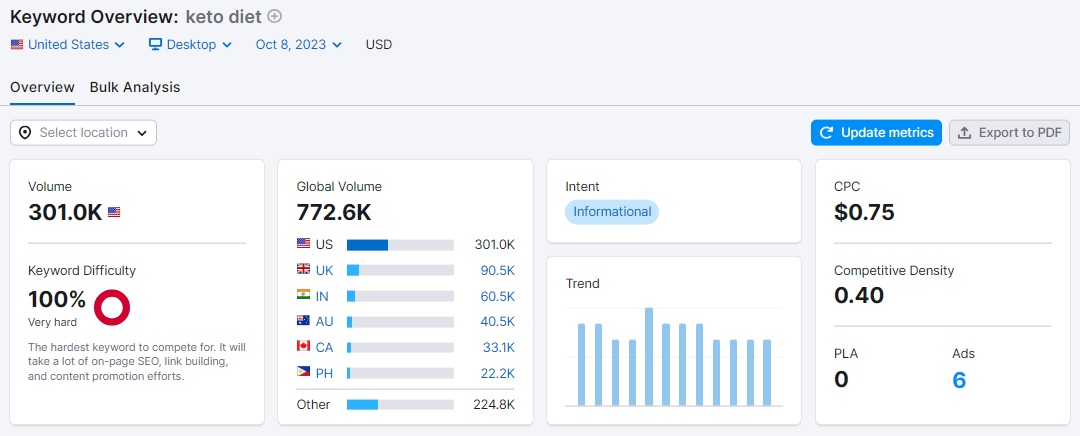
Alternatively, for long-tail keywords, you can use tools like LongTailPro and KWFinder.
2. Structure of Content Must Match Search Intent
For effective content optimization, the structure of content must match search or user intent. The online user will visit your page based on the intent of the content, which is evident from the title and meta description. But how do you think the visitors should react if the content structure does not match its intent? They will lose trust in you.
For example, if you create content “Best anti-aging product to use in 2022”, the visitor would expect a list of products rather than a general article on anti-aging products. Similarly, if the title of your post is “Apple vs. Samsung: which is the right choice”, the visitors would look for a comparison of two products based on their features, performance, and pricing.
The following are the four basic types of search intent:
Informational: The searcher intends to learn more about the topic or seeks answers to specific questions.
Commercial: The searcher aims to explore or consider multiple options to help make the buying decision.
Transactional: The searcher aims to perform or complete an action.
Navigational: The searcher aims to navigate to a specific website or webpage.
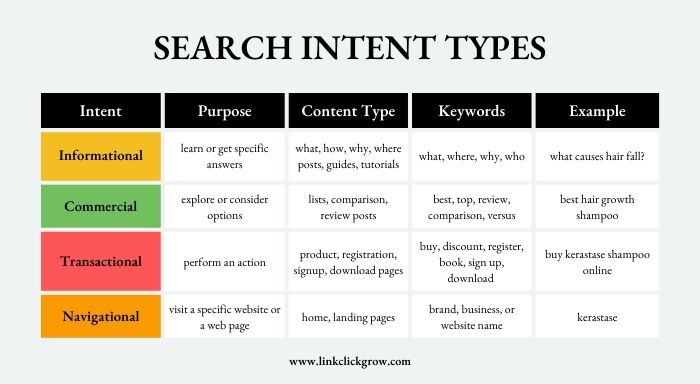
You can learn about search intent by examining top results in SERPs. However, exploring search intent for dozens of keywords can be challenging. Therefore, using tools like SEMrush can save you time and energy. For example, SEMrush’s Keyword Magic Tool shows search intent for all keyword suggestions, as shown below.
3. Focus on Internal Links
Internal links are next on the list of content tips for SEO. They make the structure of your site easy to understand, and it becomes convenient for the users and search engines to access relevant content.
Internal links positively affect user experience and help search engines in crawling and indexing.
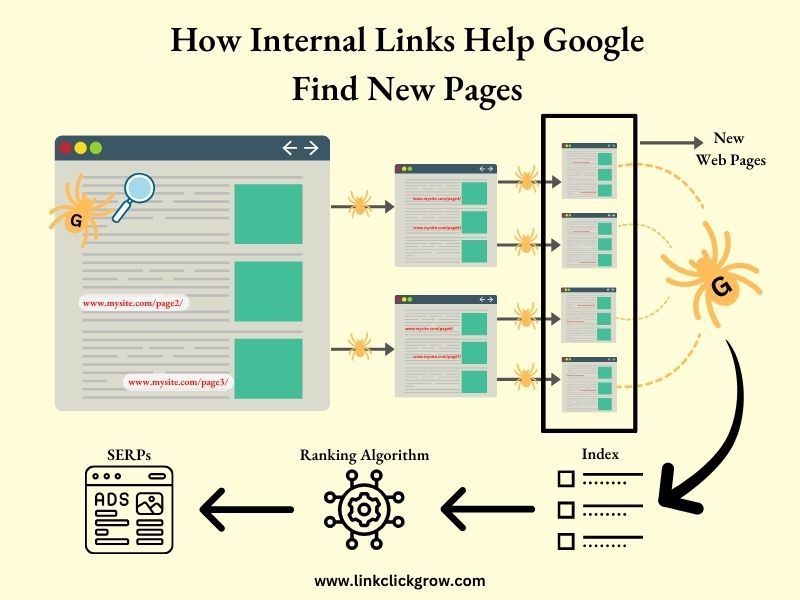
However, it can be time-consuming for websites with hundreds of pages to add internal links from old to new pages. Therefore, I recommend using WordPress plugins such as LinkWhisper, RankMath, and Internal Link Juicer for efficient and intelligent internal link-building.
The following are the essential things you should keep in mind when building internal links:
- Add links to ensure the user does not have to click over three times to access any page/content.
- Add the related posts section to increase page views.
- Find all the broken links and fix them.
4. Find and Fix Keyword Cannibalization
Keyword cannibalization occurs if more than one page of your site ranks for the same keyword, making them compete. It confuses both users and search engines. Users do not know which page to click on, while search engines do not know which page is more relevant. As a result, a less relevant page may rank higher, affecting user experience, conversion rate, and click-through rate.
Below is an example of keyword cannibalization:
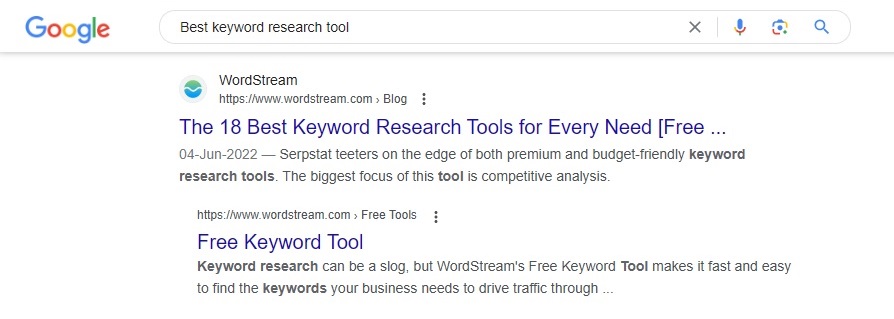
Keyword cannibalization is a severe issue you must fix immediately for effective content optimization. Use unique keywords for each content and avoid creating multiple posts on similar topics with the same intent.
5. Fix Content Gaps
Another practical content optimization tip for SEO is finding content gaps. Content gaps cause hindrances in your performance. A content gap is a gap between what your target audience wants in your content and what the content has. Content gaps affect not only user experience but also SERP ranking. Therefore, look for the following gaps in your content and fix them immediately:
- You are not creating content in different formats like infographics, images, and videos.
- The content length is short, making it look less authoritative and credible. Content optimization tools like Surfer use AI to give valuable suggestions about content length.
- You are not covering popular topics or keywords.
- Content does not cater to the needs of audiences of different knowledge levels. For example, you may create content only for an audience with an advanced knowledge level while ignoring beginners.
- You are not creating different content types to achieve specific goals. For example, certain types of content attract the most backlinks.
6. Look for Content Decay
Content decay refers to the decline in the performance of the content over the last 12 months. The decline in performance means a drop in organic traffic and SERP ranking. Content decay can happen for several reasons, such as:
- The content is not fresh or up-to-date. If you do not update old content, it becomes less relevant or less competitive. Consequently, your search engine ranking will drop because Google prefers fresh content over old content.
- Competition has grown. If your competitors publish fresh content more often or their content has more relevant information, they will likely rank higher, pushing you down the ranking.
- You are no longer promoting your old content, resulting in a decline in traffic.
Technical issues include page speed or the need to be optimized for mobile devices. You can use Google Pagespeed Insights to check the speed of your site, or for more detailed insight into how actual users interact with your site, you can use Pingdom.
The first step to fixing content decay is identifying its cause. After identifying the reason, you can optimize the content for better performance. Follow the following two steps to identify and fix content decay:
Step 1: Monitor your site’s traffic and identify pages showing declining in organic traffic and SERP ranking. You can track your pages’ organic traffic and position with the help of tools like SEMrush, Serpstat, SpyFu, and SEOTesting.
Step 2: Audit the identified pages, look for the cause behind their performance decline, and fix it immediately. For example, if the old page contains outdated information, update it by including new and relevant information. Similarly, if it is because of page load speed, fix it. In addition, you can use plugins and tools like Nitropack, WP Rocket, and WP Optimize for faster page load speed.
7. Aim to Qualify for Featured Snippet
Aiming to qualify for featured snippets is among the content optimization tips that can drastically increase organic traffic to your site. Google featured snippet is a small piece of text (snippet) that appears at the top of the first page of Google search results. Many experts call the position of featured snippets “Position 0”. Google snippets take up most space and allow you to list twice in Google search results. They are primarily from web pages already ranking on the first page of search results. However, they may also come from lower-ranking pages.
Featured snippets provide a golden opportunity to boost organic traffic. There are three basic types of snippets, i.e., list, paragraph, and table. Below is an example of a list snippet:
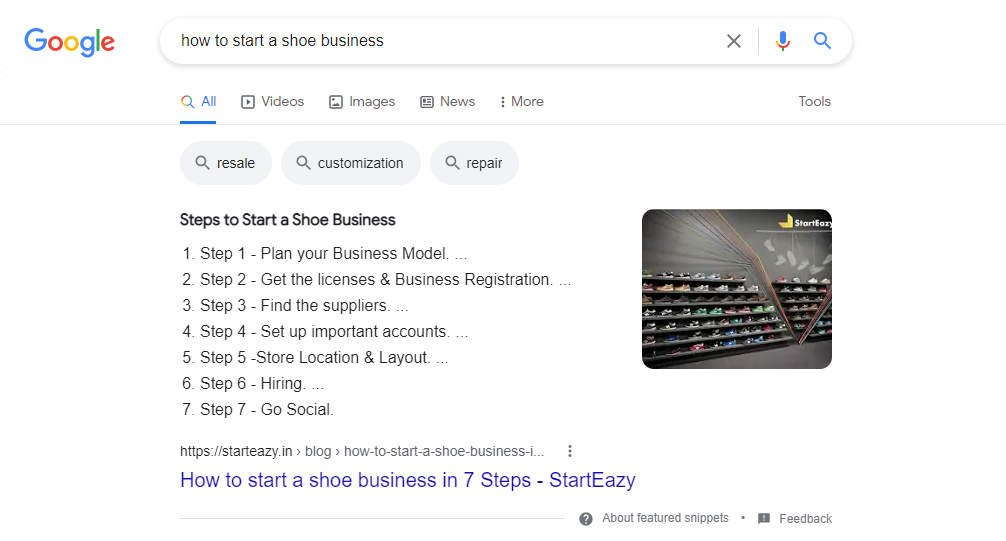
Here is an example of definition snippet:
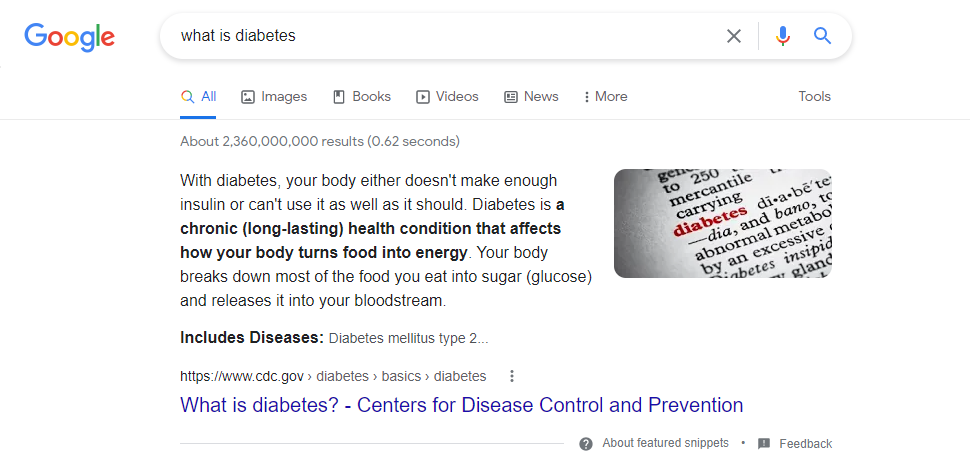
Although there is no fixed format to get a featured snippet, the following tips can help increase your chances.
- Target longer keyword phrases. SEMrush analyzed 100,000 keywords and found that longer keywords are more likely to get featured snippets.
- Make your content easy to understand by breaking it into headings and sub-headings.
- Keep sentences and paragraphs of optimal length. They must not be too long or too short. Simple and easy-to-understand sentences improve the readability of your content.
- Answer multiple questions in your content. For example, if your content is about “Diabetes”, you can include questions like “What is diabetes?”, “How diabetes can affect your health?”, etc. Alternatively, you can have a Q&A section at the end of each post to answer relevant questions.
Content Optimization Tips for User Experience
8. Write a Captivating Title and Introduction
The title tells your audience and search engines about the page’s contents. The title will appear as link text whenever your page is listed in SERPs. It is the first thing that will grab a user’s attention, based on which he will decide to visit your page.
A captivating title makes users curious about the page’s content, and curiosity makes users click through the link and visit your page. If the title is uninteresting, users will likely not visit your page.
A good title accurately describes the content of your page in the fewest possible words. The length of the title is a critical factor for SEO content optimization, as a long-length title may not display entirely because of the limit set by SERPs. In contrast, a short title may not describe the page’s contents correctly.
If the title is misleading or does not match the page’s contents, users will lose trust in your brand or business. Another essential feature of a good title is that it has the target keyword. Using the keyword in your title can help improve your rank in SERPs.
Just like the title of your page, the introduction also leaves an impact on your audience. No one wants its visitors to leave the page within the first few minutes. Therefore, an ordinary introduction will likely increase the bounce rate and affect your reputation. A high bounce rate shows poor-quality content, which Google considers while ranking your content for future searches.
An excellent introduction first highlights the problem and then tells its readers how the content will benefit them. It tempts visitors to continue reading till the end. Like the title, the introduction must include your SEO target keyword.
9. Write Persuasive Meta Descriptions
A meta description is a brief text right below the title of your page in Google search results. It aims to provide information about the contents of the page. An excellent meta description can earn you plenty of clicks. However, a poorly written meta description can negatively affect your click-through rate.
A good meta description:
- Is unique.
- Has target keyword.
- Has optimal length.
Remember, you can write meta descriptions as long as you want, but the search engines will only show a certain length and will truncate the rest. For example, Google shows around 155-160 characters in meta descriptions.
10. Fix Spelling and Grammar Mistakes
Next on the list of content optimization tips for user experience is fixing spelling and grammatical mistakes. Spelling and grammar mistakes can upset your audience, increasing bounce rates. There are two options you can use to correct spelling, grammar, and punctuation mistakes:
- Hire a professional who can proofread your content. It can be an expensive option and may not be suitable for those on a low budget.
- Invest in excellent tools such as Grammarly, ProWritingAid, and WhiteSmoke.
11. Cater to Voice Searches
Catering to voice searches is among the content optimization tips that will pay you off in the long run. Currently, the number of voice search queries is significantly less, but with the popularity of smartphones, more people are opting for them. Therefore, it is close when many of your audience will use their voice to look for information in search engines. However, at that time, you may need more time to change your existing content to optimize it for voice search.
Therefore, it is critical to consider this factor when creating content. For example, to optimize content for voice searches:
- Use keywords that are questions. Most users turn to Google Search Assistant or Alexa for an answer. For example, a user may ask, “How to cook a steak?”.
- Use conversational language in your content to increase your chances of ranking for voice searches.
- Ensure your site is mobile-friendly. Most voice searches are done by mobile users, making it essential for your site to display correctly on devices of different screen sizes.
Content Optimization Tips for Conversions
12. Place CTAs Above the Fold
The position of CTAs plays a vital role in conversions. The visitors can only convert into customers if there is a visible call to action. Placing CTAs above the fold ensures they are visible to all visitors, even those who do not scroll down the page.
On the other hand, if you place CTA down the page, the visitors who do not scroll down will never get to see it.
13. A/B Test CTAs
Last on the list of content optimization tips is A/B testing. A/B test or split test is ideal for determining what works best for your target audience. In other words, you present different versions of a CTA to your audience and analyze which leads to better click-through or conversion rates.
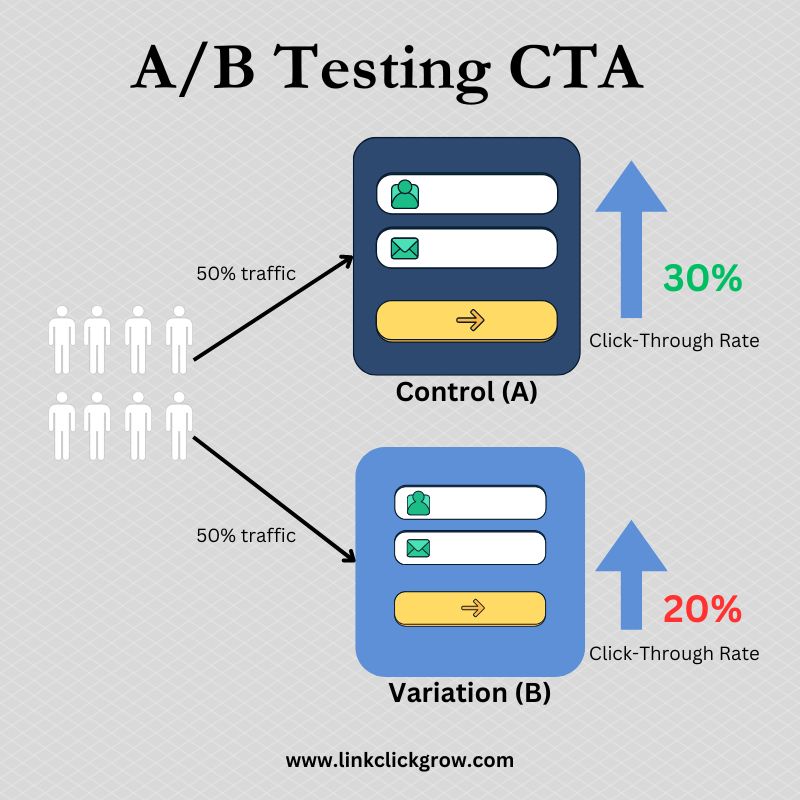
Regarding CTAs, there is no fixed rule for their text, font, or size. However, you can A/B test these elements to decide which version leads to a better conversion rate. But remember, you should only test one element at a time. If you test multiple elements, you may not identify which element leads to better performance.
Conclusion
Content optimization is essential for increasing search engine rankings, traffic, and conversion rates. However, you should aim to optimize content for humans, and it automatically becomes ideal for search engines. To achieve the best results, follow the above-mentioned content optimization tips and change your content marketing strategy accordingly.

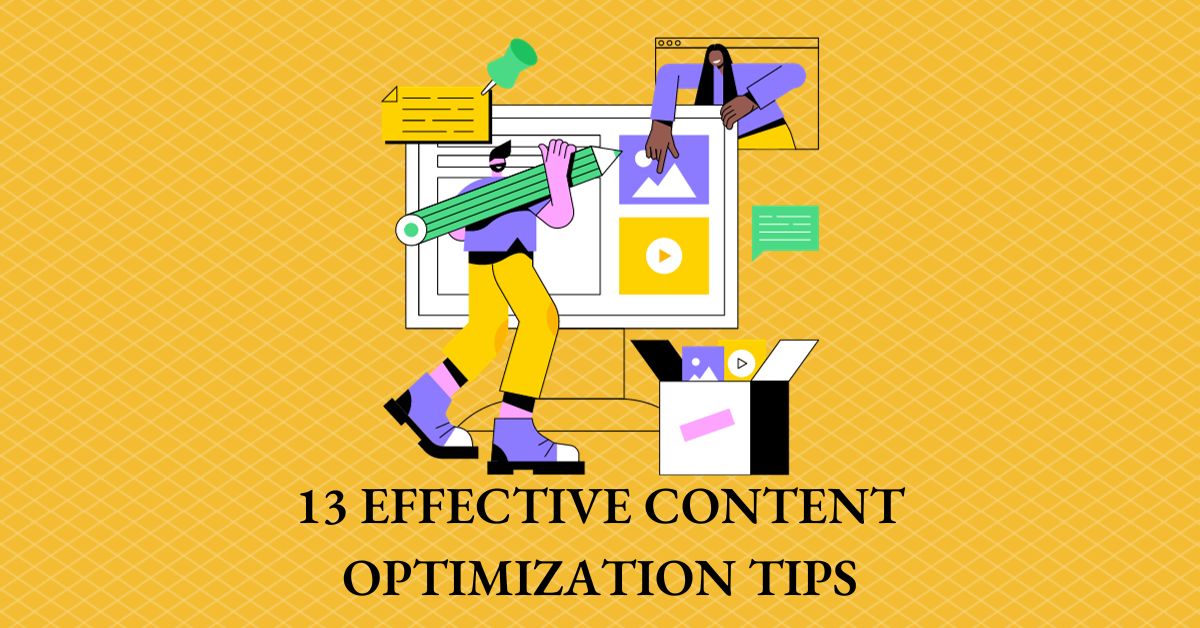


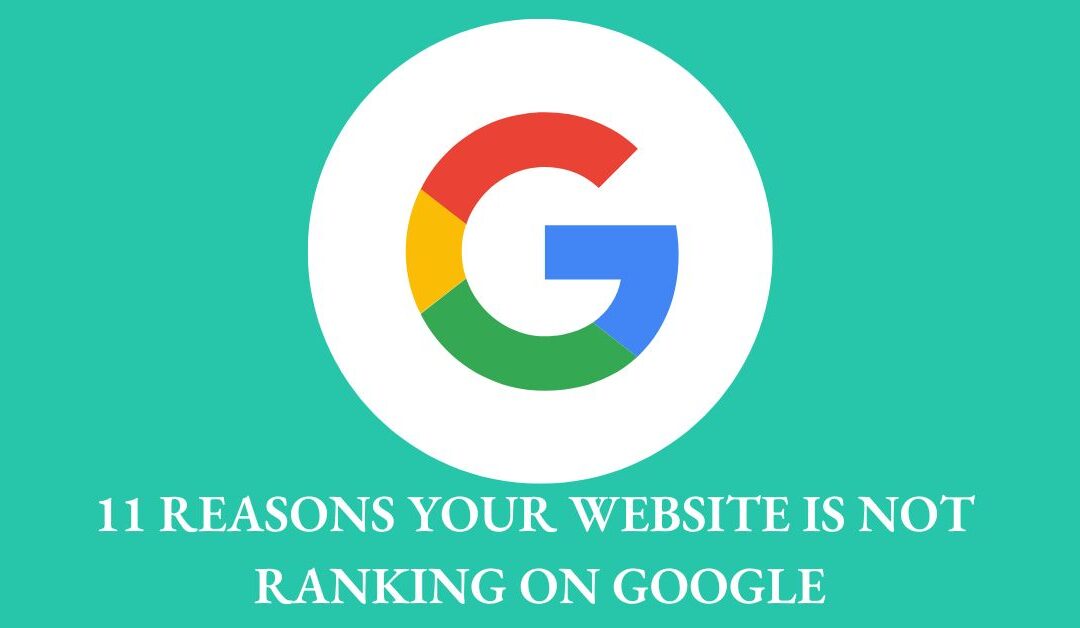
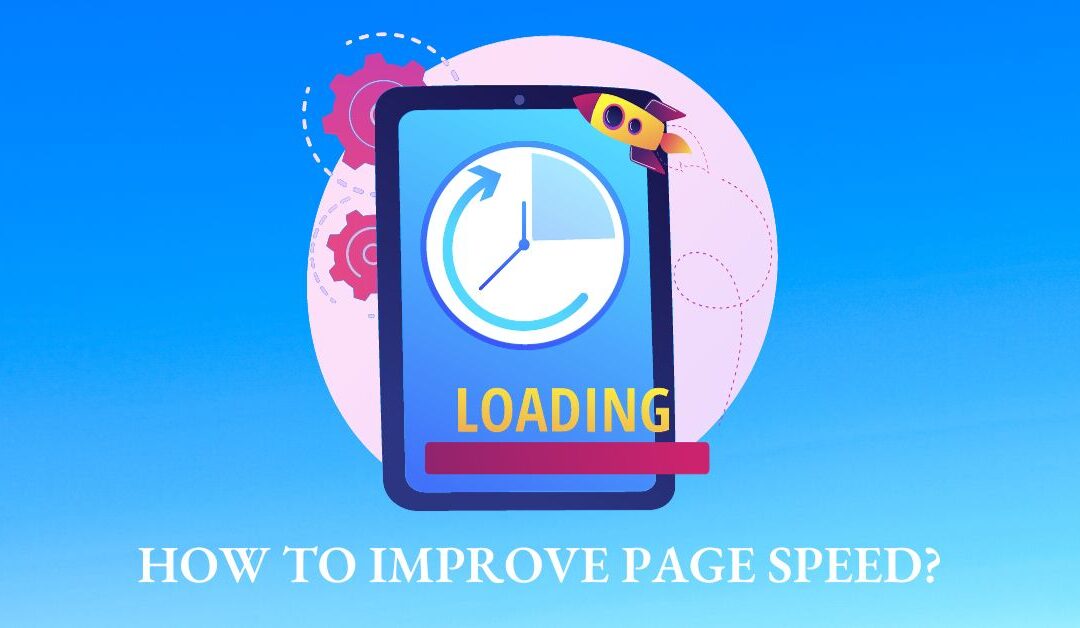
0 Comments